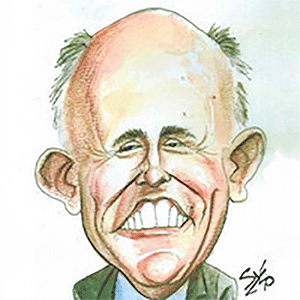Apartment construction cools rents in some regions
Published in News & Features
A historic rate of apartment building is starting to make a difference in Sun Belt rents, but most tenants are still paying way more than they did earlier in the decade and rents are still rising in many Northeast and Midwest states.
The fact that rents are starting to drop as more apartment supply comes online, yet still remain perilously high for most low- and moderate-income renters, is new fodder for the debate over how to help more people afford the escalating costs of housing.
Increasingly, states see new apartments and other housing construction as the answer, though experts disagree on how much more is needed — and where — as supply begins to outstrip demand in some areas. New construction is also expensive, given today’s inflated material and labor costs, and doesn’t tend to produce much housing that is affordable to people with lower incomes, though it can prevent gentrification of existing affordable areas.
“When you don’t allow enough homes to get built in high-income neighborhoods, higher-income people tend to move into lower-income areas,” said Alex Horowitz, who directs the Housing Policy Initiative at the nonprofit Pew Charitable Trusts. “Then lower-income people have nowhere to go.”
Nationally, December rents dropped slightly in 2024 for the second straight year, according to an Apartment List analysis of lease transactions. December rent peaked at a median $1,394 in 2022 and is now down slightly, about 2%, to $1,373 as of last year.
The biggest two-year decreases were in Sun Belt states that experienced apartment building booms: Rents in Arizona, Georgia and Utah dropped 6%, and those in Texas and North Carolina fell 5%, according to a Stateline analysis of data from Apartment List, a company that posts rental listings online. Alabama, Colorado, Florida and South Dakota saw decreases of about 4%.
The new housing in mostly Sun Belt states has led to a drop in the national median rent, but rents in 32 states plus the District of Columbia have been on an upward trajectory since 2022. Those states include North Dakota (up 14%), Alaska (up 13%), Connecticut and Wyoming (each up 9%) and Kansas (up 8%). Vermont and West Virginia are not included in the analysis because Apartment List did not have enough information on leases from those states, though both states have large shares of renters paying excessive rent compared to income.
Austin housing boom
Austin, Texas, with the highest rate of new construction in recent years, appears to be a prime example of the effect of more construction: Recent social media posts show young renters celebrating their lower payments.
In a January TikTok video she titled “jaw on the floor,” 27-year-old Becca Flores said, “I just got my lease renewal offer on my apartment in Austin in Texas and it was down almost $200. That has, like, never happened to me in my life,” she said in the video. Many of the hundreds of comments relayed similar stories of unexpected rent drops.
Renters in the Northeast and Midwest have not been so lucky.
In New Jersey, which has seen an influx of new residents that began with people fleeing New York City during pandemic lockdowns, median rent has increased 3% to $1,885 since 2022. State efforts to force more city-by-city apartment construction have run into local opposition.
Palisades Park, a majority Korean American borough of about 21,000 people in New Jersey a few miles from Manhattan, has been overwhelmed by developer proposals to build more apartments, said Democratic Mayor Chong “Paul” Kim. The borough settled recent lawsuits by developers partly by agreeing to allow accessory dwelling units, known as ADUs, which can help some cost-stressed homeowners by letting them earn rent from ADUs on their property.
“We wanted to do something that would benefit current residents,” Kim said. “Residents are saying it’s a good move to reduce the [apartment] developments. The judge said we can’t slide, we have to comply with the state law. We’re trying to head off a concentrated influx of developments coming all at once — we don’t have the public services to support it.”
Another New Jersey mayor, Republican Mike Ghassali of Montvale, calls the state law “forced urbanization.” Ghassali led 26 municipalities in a court challenge last fall.
Rents escalated dramatically in 2021 and 2022 and haven’t come back down to what they were before that period in any state: Rents are up from 12% in Minnesota to 42% in Wyoming since December 2020, when they declined early in the pandemic.
But a few fast-building metros have seen drastic drops: The median rent in the Austin area has dropped by 13%, or $199, to $1,362, since 2022. In Atlanta; Jacksonville, Florida; Phoenix; and Raleigh, North Carolina, the median rent has declined by 7%.
Austin was cited in a separate Apartment List analysis in June, showing that rents had begun to drop amid the largest rate of apartment construction in the nation. Building permits for about 10 units per 1,000 residents were issued in the Austin metro area between 2021 and 2023.
By comparison, Northeast and Midwest metros with little construction in that time saw rents rise instead of drop. Cleveland, Milwaukee and Providence, Rhode Island, had some of the largest increases and lowest construction rates: less than one unit permitted per 1,000 residents.
Vermont and West Virginia are not included in the Apartment List data, but in both states nearly half of renters pay more than 30% or more of their pre-tax incomes for rent and utilities, an amount deemed excessive under federal standards.
How big is the gap?
Apartment building reached a historic peak last year, with 67,000 units finished in August, the highest number on record for a single month since October 1974, with total housing units nearing an annual construction rate of 1.7 million a year.
Estimates of the national housing shortage vary widely, from 1.5 million houses and apartments to 20.1 million. Most experts estimate a shortage of 1.5 million to 5.5 million, according to Daniel McCue, a senior research associate at the Joint Center For Housing Studies of Harvard University.
Freddie Mac, a federal agency that buys home loans to support the housing market, estimated the shortage at 3.8 million in 2020, and said in November that the gap was 3.7 million as of the third quarter of 2024, despite all the recent construction.
“While the U.S. added 5.8 million housing units since our previous estimate, we also added 6.3 million households,” Freddie Mac’s deputy chief economist, Leonard Kiefer, said in a statement, adding that there are another million families that would rent or buy if they could, but have been priced out of today’s market.
But not everybody believes there is a shortage.
Kirk McClure, professor emeritus of urban planning in the School of Public Affairs and Administration at the University of Kansas, published a paper last year arguing that the nation built too many homes and apartments in the bubble years of the late 2000s, and that between 2000 and 2020, home construction exceeded the number of new families by 3.3 million.
“We’re still, to this day, trying to absorb that excess supply,” McClure said. Prices would drop if we built millions of new homes, he added, “but we don’t want to go back to 2008,” when housing prices collapsed in the Great Recession.
Instead, McClure said, the answer is to put more money into the pockets of lower-income people.
“What we need to do is raise people’s incomes,” McClure said. “I’ve often said the best housing program out there is the minimum wage. When income reaches $20 an hour, the affordability problems start to fade.”
The problem, McClure said, is that people want to live in specific places and bid up the prices in those areas, not there is a national housing shortage.
“My colleague lives on the Upper West Side of Manhattan, which is just a wonderful part of New York City, but I think we all agree that it’s expensive and New York doesn’t want to build hundreds of thousands of apartments there,” McClure said. “The truth of it is, even in the New York area, which deems itself to have a housing shortage, there are units waiting for you in New Jersey if you’re willing to commute.”
But Rob Warnock, an Apartment List senior research associate, said that suburban and exurban building will never make up for lack of housing in popular cities.
“For affordability to improve, housing has to be built in the places people want to live,” Warnock wrote in an email.
©2025 States Newsroom. Visit at stateline.org. Distributed by Tribune Content Agency, LLC.







Comments